1. Therapeutic process
1.1. Brief
1.1.1. 3-4 sessions typical
1.2. No
1.2.1. Exclusion criteria
1.2.2. Need for assessment
1.3. Unpredictable
1.3.1. Pathway
2. Techniques
2.1. Listening with a constructive ear
2.1.1. Focus
2.1.2. Progress
2.1.3. Appreciative context
2.2. Questions
2.2.1. More detail
2.2.1.1. What else?
2.2.1.2. How else might you know?
2.2.1.3. Who else might notice?
2.2.2. Future orientated
2.2.2.1. Establish contract
2.2.2.2. Best hopes
2.2.2.3. Miracle question
2.2.2.3.1. Detailed picture
2.2.3. Present and past orientated
2.2.3.1. Exceptions
2.2.3.2. Elements of preferred future
2.2.3.3. Strategy questions
2.2.4. Progress orientated
2.2.4.1. Scale
2.2.4.1.1. What has been better since we last spoke?
2.3. Summary and suggestion
2.3.1. Client noticed
2.3.1.1. Strengths
2.3.1.2. Capacities
2.3.2. Signs
2.3.2.1. Hope
2.3.2.2. Exceptions
3. Historical context
3.1. Problem patterns
3.1.1. How to interrupt?
3.1.2. Maintained by wrong solutions
3.1.3. Therapy should disrupt
3.2. Shift in approach
3.2.1. What was already working
3.2.2. Shift to imagined future
3.2.2.1. Miracle question
3.2.2.2. Therapeutic tasks
3.3. Focus
3.3.1. Solutions
3.3.1.1. Preferred furture
3.3.1.2. Resources
3.3.1.3. Progress
3.4. Coconstruction
3.4.1. New meanings
4. Major concepts
4.1. Outcome focused
4.1.1. Best hopes
4.1.1.1. What they want
4.1.1.2. Determines direction
4.1.1.3. Every question links to
4.1.2. Construction not deconstruction
4.2. Every client is motivated
4.2.1. Unique ways of cooperation
4.3. Clients are experts
4.3.1. Own lives
4.3.1.1. What they want
4.3.1.2. How to achieve it
4.3.2. Therapist expertise is conversational
4.3.2.1. Don't make suggestions!
5. Origins
5.1. Approach
5.1.1. Postmodern
5.1.2. Constructivist
5.2. Family therapy
5.3. Originators
5.3.1. Steve de Shazer
5.3.2. Insoo Kim Berg
5.4. Central
5.4.1. Minimalism
5.4.1.1. Of the unnecessary
5.4.2. Centralising
5.4.2.1. Client
6. Theory
6.1. None
6.2. Not normative
6.3. Post hoc
6.3.1. Social constructionism
6.3.2. Wittgenstinian
